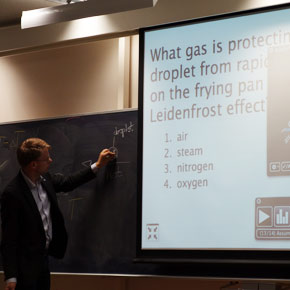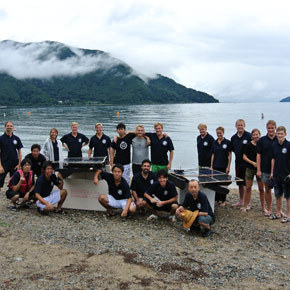教育プログラム
交流校による集中講義や、過去の交流実績であるソーラーボートプロジェクトの紹介をします。また、今後の予定もこちらもこちらで紹介していきます。
-

特別講義
予備講義、集中講義の詳細はこちらから確認してください。 [Read More] -

ソーラーボート
KTHと共同で取り組んだ自立型の無人走行ソーラーボートプロジェクト [Read More]
2015年度レクチャーシラバス
Fluid mechanics in small systems:
PMicrofluidics is the art of handling very small liquid volumes. This is driven by the possibilities offered by miniaturizing analysis and synthesis in chemistry and biotechnology. In typical microfluidic systems, liquids, mixtures or droplets are passed through networks of channels in dimensions of 0.1 mm or less. Here surface tension and electrical forces among other things become of primary importance.
Through the four lectures the participants will be active in responding to questions and discussing topics. Suitable preparation for each lecture is to briefly review the pages from Tabelings’ book that is listed under each lecture.
Literature references below are to ‘Introduction to Microfluidics’, by Patrick Tabeling, Oxford University Press 2005, ISBN 0-19-856864-9
A tentative plan for the lectures are:
6/9 Lecture 1
Overview of basic fluid mechanics. The Navier Stokes equations in incompressible flows. Small Reynolds number flows.
Section 2.2, p71-77, section 2.4, p86-90, section 2.5, p90-101
6/12 Lecture 2
Droplets and bubbles. Surface tension on a liquid interface. The physical origin of surface tension. Nondimensional numbers that characterize surface tension effects.
Parts of section 2.7, p105-109, p118-121
6/16 Lecture 3
How surface tension can cause fluid flow, thermocapillarity and solutocapillarity. Wetting, i.e. how a droplet spreads over a dry surface.
(same material as lecture 2)
6/19 Lecture 4
Electric fields can drive fluid flows. Electrokinetics as a way to move fluids in microsystems.
Section 4.1-4.4, p189-201.
*Course materials will be handed out in the first lecture.
(Gustav Amberg)
交流校による集中講義や、過去の交流実績であるソーラーボートプロジェクトの紹介をします。また、今後の予定もこちらもこちらで紹介していきます。

